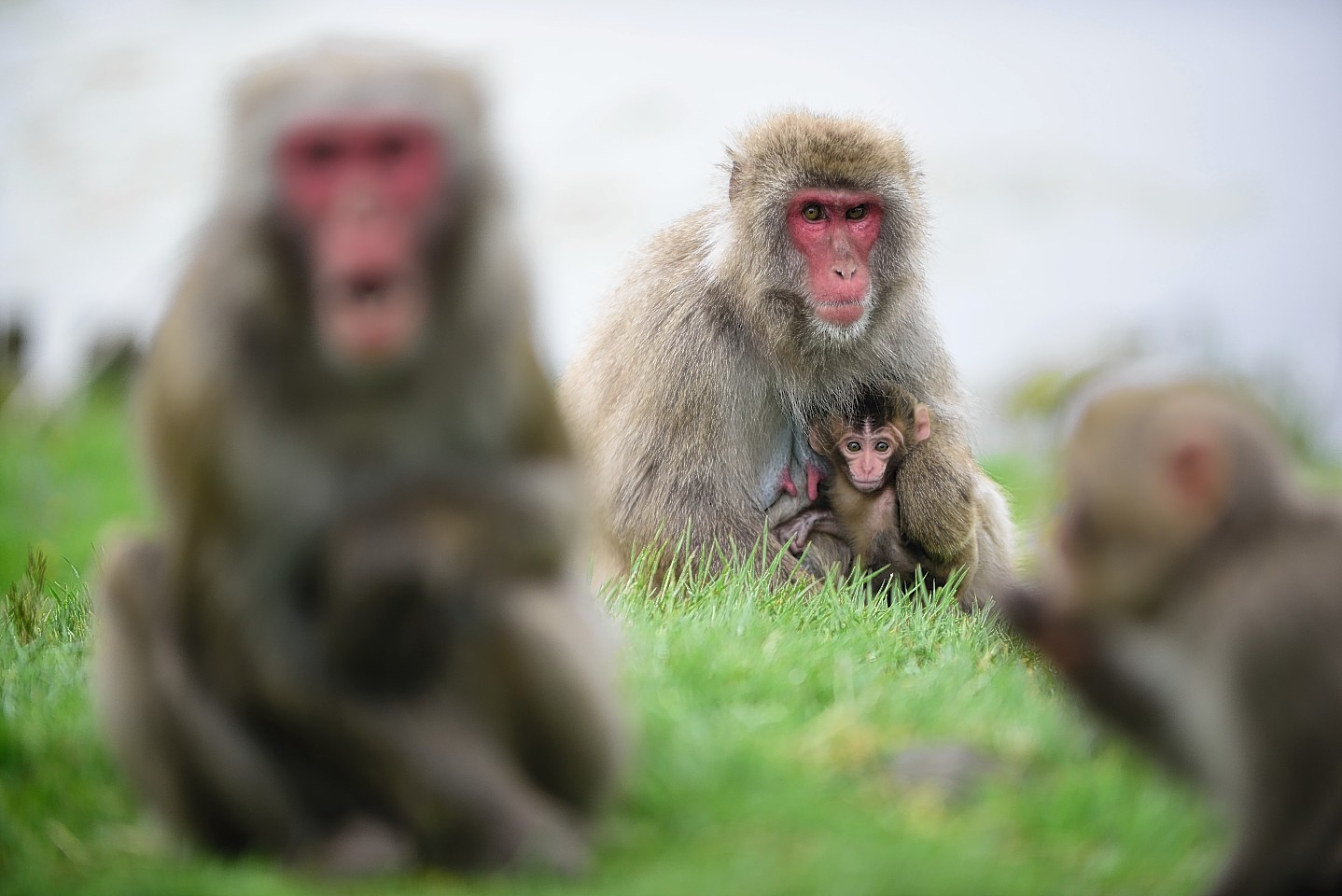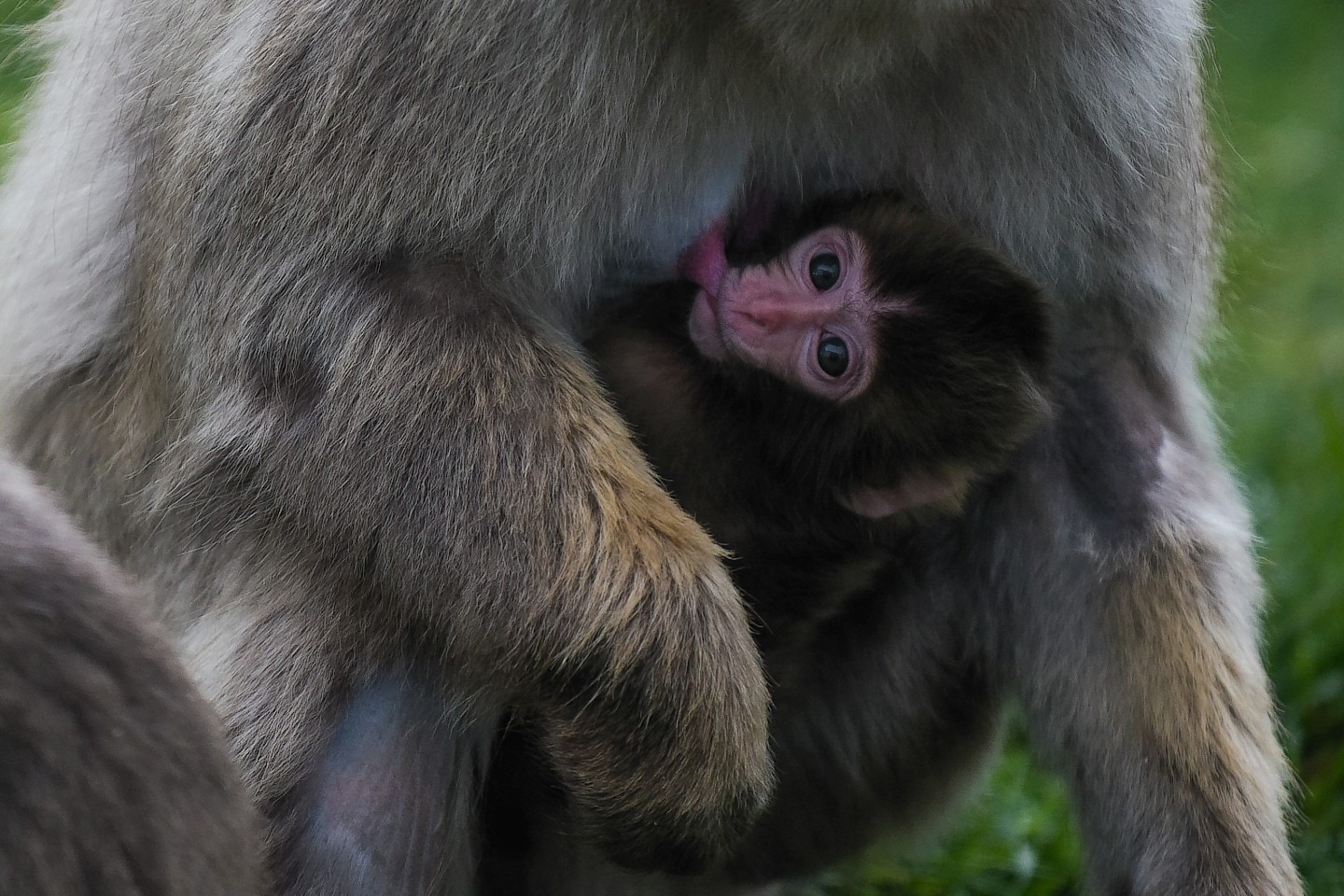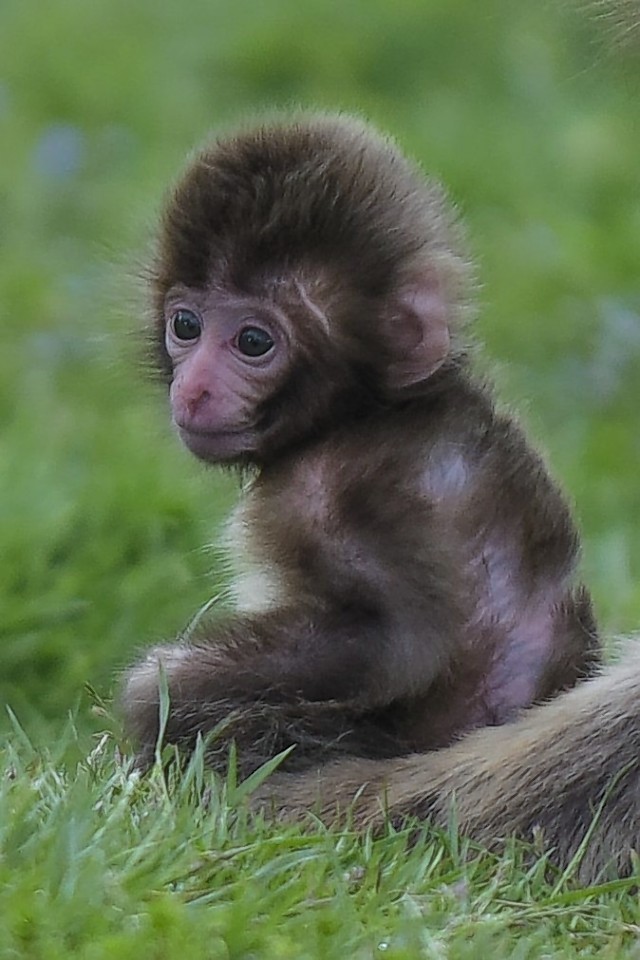With the arrival of summer comes a flurry of new-borns at the Highland Wildlife Park at Kincraig.
The latest are a trio of male Japanese macaques – or snow monkeys.
The first arrived at the end of April and the latest this month. The troop now comprises 24.
All are said to be doing well, with the slightly older one starting to jump around and forage for food while the youngest still sticks close to mum.
This year’s first-born was named Giichi – “One Rule” in Japanese. The second oldest is Goku, meaning “Great Spirit”.
Giichi was born to mum Zokky, Goku was born to mum Angara and the youngest – who is still to be named – was born to mum Aimi.
The park’s head carnivore keeper Una Richardson said: “They are extremely playful and the oldest two are lots of fun running around and playing with each other, whilst the youngest one is always near to his mum and is still quite shy.
“Once he is a little bit older he will join in and play with the two older boys.”
Japanese macaques, probably most well-known for the images of them soaking in hot springs, are native to the islands of Japan. Their habitats range across various climatic extremes. These are the most northern of the species.
Japanese macaque babies in the southern end of the population distribution live in sub-tropical forests while populations found in the northernmost reaches generally live in sub-arctic forest in mountainous regions. Due to the great differences in their habitats, macaques have adapted to handle their respective climates.
Listed as “of least concern” on the International Union for Conservation of Nature and Natural Resources “red list”, Japanese macaques are widespread throughout Japan and have been officially protected from hunting since 1947.
The average troop size of the Japanese macaque is 41, but they can range from groups of 10 to as many as 160.


